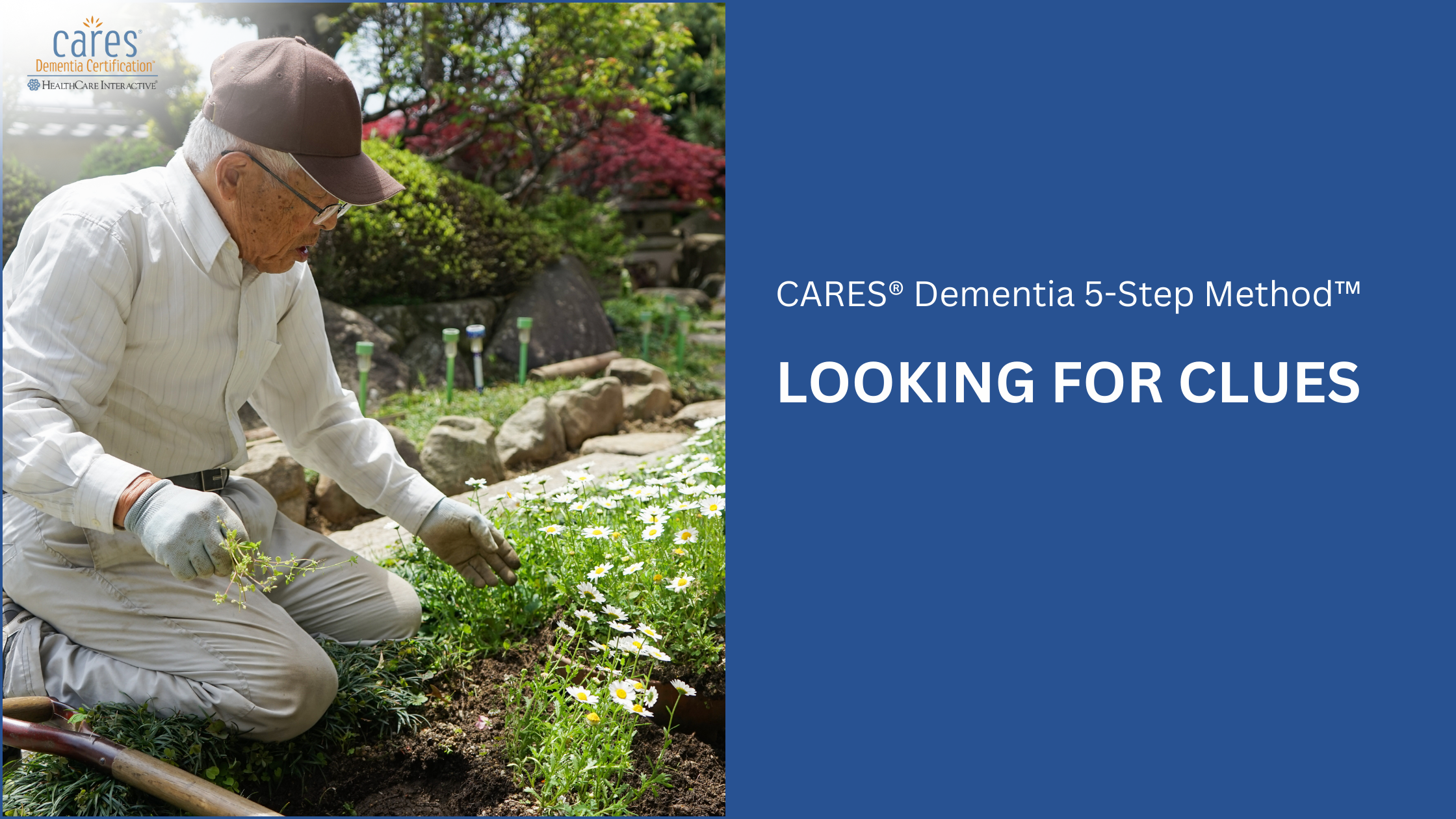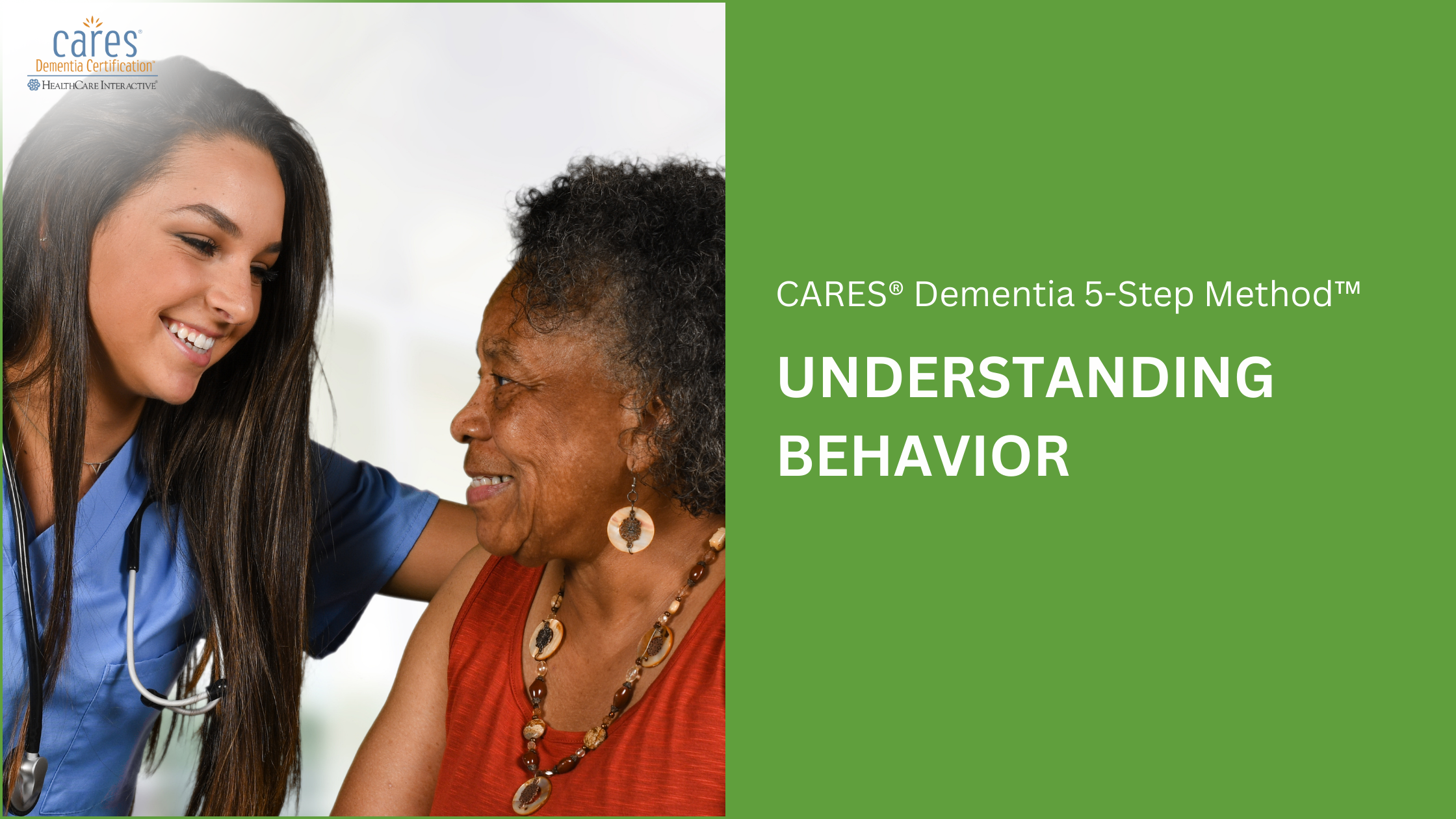Getting to know the person and building a connection is key to understanding their behavior. By observing their actions closely, you can find behavior clues in dementia that help you understand what they might be thinking or feeling. To learn more about what their actions mean, you need to know how to assess them. This can be tricky when caring for someone with dementia, as behavior analysis for dementia care takes patience and attention. Your job is to watch closely and try to understand what they’re telling you.
Look for Behavior clues that can help you figure out what they’re thinking or feeling and why they’re acting the way they are. Understanding behavior is important for creating a connection, and it’s important to take time to assess the behavior and the situation so you can find the best way to help.
Ask the following questions:
1. Who is the person? Why are they like this? What happens? If you use the CARES® Approach from our program, you will know a lot about the person.
2. What happened before, during, and after the behavior? Before you decide why something happened, make sure you really think about what happened in as much detail as you can.
3. Where? Think about where the behavior occurred. Sometimes places can give you clues, because certain places or areas may trigger certain behavior.
When? What time of day and day of the week did it happen? Is there a clue here?
4. With whom? Who was around the person when the behavior happened? Was a family member or caregiver involved? Other staff members?
After considering these important questions, and considering behavior clues in dementia, you can start to understand why the person acted a certain way. Once you have this understanding, it becomes easier to figure out how to help them.
Would you like to earn your certification in CARES® Dementia 5-Step Method?
Start now and gain access to Module 1 for free at www.hcinteractive.com/5StepDemo.
Don’t miss out—this limited-time offer is available now!


